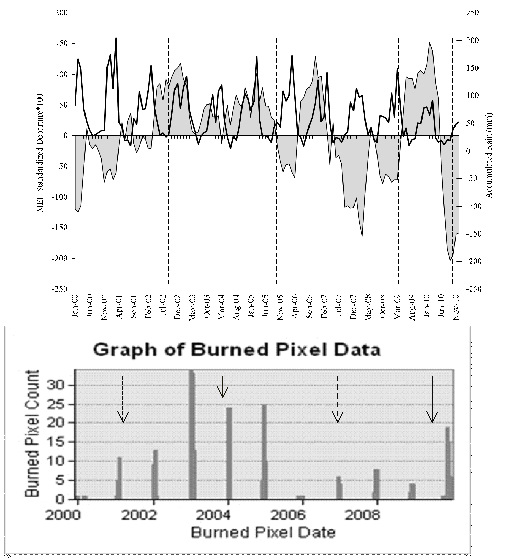In Huascarán National Park, Peru, grazing and anthropogenic burning have been interacting for decades with natural ignitions and climate change to reconfigure the fire regime of the vegetative communities. Local resource managers are very concerned about the impacts of anthropogenic fires in the Park because they potentially disrupt ecological processes as well as tourism. Over the past decade, human alterations to the region’s fire regime were perceived to have led to an overall increase in fire occurrence and fire severity. In recent years, climate variability and change has led to more variable conditions during the dry season and moister conditions during the growing season, so that an increase in fuel loads has combined with drier burning conditions to also potentially alter fire severity. To examine these discrepancies, we used a time-series of two different products from the MODIS Terra and Aqua platforms to document fire occurrence and extent from 2000 to 2010. The satellite data indicate that most fires originate and burn in Huascaran National Park itself. In some cases the communal lands do burn, but the fire itself almost invariably was started in the National Park and moved into the communal lands from there. However, when the Park as a whole is examined, it appears that there is a low fire return interval for any given location and that the total acreage being burned for a given year is relatively small. The challenge for resource managers is how to best reconcile these factors to more effectively manage the parklands.







